The borough of Wedding, situated in the north of Berlin, gets the hearts of electronics enthusiasts, startup entrepreneurs, and the R&D teams of SMEs racing. Since the end of 2017, Start-A-Factory (SAF) at Fraunhofer IZM has been offering a unique equipment infrastructure and working environment for hardware developers. At the modular development and production lab, they can take their hardware visions from the first PowerPoint sketch to high-class prototypes and conduct their research in collab projects.
RealIZM has met Alexandra Rydz and Ulf Oestermann to speak about how SAF differs from other MakerSpaces or FabLabs in Berlin, why some hardware projects fail, and why SAF has strict house rules.
Where some of the pioneering work was done on the construction of electric motors 100 years ago, there are now overseas containers connected by steel bridges that give the rough industrial space a completely new use and feel. A large stair-shaped platform extends above two of the overseas containers and, perched on top, lies Ulf Oestermann’s workplace. From this crow’s nest close to the ceiling’s height of 10 meters, he has a 360° view of what is happening in the hall. The graduate engineer for microsystems technology has been with Fraunhofer IZM since 2005 and has been one of the key thinkers behind the SAF, together with Dr. Stephan Guttowski, head of the office of the Research Factory Microelectronics Germany and the Fraunhofer Group for Microelectronics since 2021. As the contact person on site, Ulf pulls all the strings and misses none of the goings-on at the site.
From the front, daylight enters the hall through the huge windows. On the eastern side, a large expanse of glass give visitors a view into one of the IZM clean rooms. Behind these windows, visitors can catch a glimpse of another world: In the yellow-orange light, scientists in light blue cleanroom suits are working on highly integrated semiconductor structures.
The SAF dress code is much more relaxed. SAF’s heart – the prototype line – is located in the immediate vicinity of the clean room. Mike Groß, responsible for the technical support of the prototype line, can be recognized by his white lab coat. Ulf’s trademark attire, by comparison, is a kilt.
The users on site are as diverse as their fashion choices are colorful. Some of them come to SAF directly after completing their studies at the Technical University of Berlin or the HTW to pursue their first project ideas. Experienced entrepreneurs looking for support in process or technology development are also frequent guests. One SAF user has even already founded no fewer than four companies and successfully exited three of them.
Modular development and production lab for hardware: How it all began…
When asked about the beginnings of SAF, Ulf takes a moment to explain the thinking behind it: “With Start-A-Factory, we created a service in 2017 specifically for small companies – from start-ups to SMEs – to provide them with technological support for hardware-specific issues. When we talk about hardware, we mean assembly and interconnection technologies. Put simply, anything that has a connector or an electronic component.” It’s about low-threshold offerings that also differ significantly in terms of the time they take from the traditional approaches of a Fraunhofer Institute.
When large industrial enterprises collaborate with research institutes like Fraunhofer IZM, projects usually follow a certain process. Based on preliminary discussions, specifications are drawn up for of the technologies that is to be developed, and a project plan is drafted on that basis. Once the contract has been signed, the work then gets done within a specified timeframe. The process is similar for projects funded by the EU, the BMBF, or other third-party funds: First, an application is submitted, then the cooperation agreement is drawn up and the work packages defined, and finally, the actual project work is carried out over several years. This is time that young or small companies – start-ups and SMEs – simply do not have. And this is precisely where SAF comes in. R&D teams can come here with very concrete hardware problems and get doctored up as quickly as possible. “Getting Things Done!” is SAF’s motto.
What does SAF offer that other MakerSpaces do not?
In Berlin, there are many MakerSpaces, accelerators, and incubators, where aspiring young entrepreneurs can try their hand. “However, SAF is not in competition with commercial providers such as MotionLab Berlin, Next Big Thing, or the Bosch Startup Harbour“, Alexandra Rydz, responsible for external communication at SAF, explains. “We see ourselves as one node within this network! For us, sharing and collaborating with each other is paramount. It is completely normal that development teams implement a certain part of their projects with SAF and another part with MotionLab Berlin, for example. Important multipliers include, for example, Berlin Partner and Investitionsbank Berlin (IBB).”
Unlike commercial MakerSpaces, SAF does not rent out workstations or machines for use. Instead, a cooperation agreement is concluded for a limited period of time. Furthermore, SAF does not offer a fixed program, but responds to the individual requirements of each development team. Depending on requirements, these can be workshops, 2 or 3-week crash courses in microelectronics, all the way up to support for cooperative ventures usually lasting 6 months or even EU-funded projects lasting several years.
“We have been told by participants at the end of our two-day workshops: ‘Thank you, now we get it! Next, we will acquire money to hire our own electronics engineer,” says Ulf. “In other cases, we are asked to analyze together where there is urgent need for further training, so that we can actually develop hardware successfully and market it later.”
Why do projects fail? 5 reasons and possible solutions
In the five years of its existence, the SAF team has gained lots of experience and insights from its cooperation with development teams. When asked what hardware developers find particularly difficult, the team lists five main reasons.
#Without documentation, you will fail
One central aspect that small teams in particular often neglect at the beginning is documentation. It is the be-all and end-all and forms the basis for future project success. Documentation is not sexy, but essential!
The mantra is: When you’ve tried something, whether it worked or not, write it down! It saves an enormous amount of time and also frustration if it is possible to trace what has already been tested and if it is documented what has proven successful under which conditions. How documentation is done must be clear in each team.
It is extremely important to be able to track when and for what reasons adjustments were made in order to avoid repeating errors and also to keep the generated knowledge available for the team during development.
#Know the path you have taken
Over time, projects evolve. Many teams often turn away from their original core idea for funding reasons. Therefore, it is important to understand why you left the originally planned path at a certain point.
#See electronics through the user’s eyes.
In the early days of SAF, there were numerous projects focused on adapted operating options for older people. “Many of these ideas failed because they were not user-friendly. The hardware was always correct,” Ulf reports. To develop a successful product, it takes the understanding and time to design prototypes from an application perspective, implement them, test them and, if necessary, refine them.
#Know your dependencies – let’s play “the weakest link”
Another topic that is often underestimated by hardware developers is the supply chain. In the initial euphoria, little attention is paid to the question of the availability of components and parts or to their delivery time.
As a software developer, you need a computer as equipment. As a hardware developer, you are dependent on suppliers and the availability of certified components, parts, and materials. Especially in the semiconductor industry, there are defined development steps with e.g. the discontinuations of components, which can hit careless developers hard.
#Define your product as early as possible
While software code can (theoretically) be changed and altered at any time, redesigning hardware is much more difficult and time-consuming. “Designing hardware is a very piecemeal, complex process,” Alexandra elaborates.
“In the first product sketch, a Bluetooth connection may not play a role. However, if you already know that this will be an important requirement in one of the next product stages, we recommend thinking about this option on the PCB from the beginning or to provide for it right away.”
Research and development for future-proof electronics
“Since we opened, numerous companies have used SAF. From hearing aids to smart seatbelts, new devices for 3D printing, ultra-flat power supplies to sensor technology on plants – lots of work has been done here. You can see a trend. In the near future, the focus will increasingly be on GreenTech,” Alexandra explains. Unfortunately, for reasons of confidentiality, the SAF team cannot reveal more.
“We are doing research and development work here. At the same time, we see ourselves as partners. We show how, for example, manufacturing processes can be implemented efficiently and cost-effectively, so that they can later be scaled up from a single product/prototype to a billion units. While it is possible to run a Minimum Viable Product (MVP) with an Arduino or Raspberry, this is neither allowed nor advisable for a production-ready product. Among other things, we point out the challenges with the market launch – especially during the ramp-up phase. If you want to profit from Christmas sales at a major global online portal with your product, you need to have your product already certified, tested, and in production by Easter!”
A mixture of research and teaching is practiced at SAF. The transfer of knowledge and experience is paramount. When asked how the SAF team’s activities are distributed in percentage terms, the answer is: 50% knowledge transfer, 30% practical work under supervision on the prototype line, and 20% general consulting.
Perfectly connected: Sharing knowledge at Start-a-Factory
The converted overseas containers serve as laboratory and office spaces for start-ups and SMEs. Here, ideas are generated, packages are designed with Solid Works and circuits are created in Altium. The start-ups can knock on the doors of the SAF team at any time and ask for advice. “One of our tasks is to show, from a technological point of view, whether a product is future-proof. That is: that the product can still be made in 5 to 10 years,” says Ulf. “A big challenge is that the teams are always confronted with gaps in their knowledge during the individual steps. This is not easy for us or for the developers. We are virtually external members of their team – like another shoulder. Nobody normally needs another shoulder! Let’s face it, though, when you have your hands full and can’t get ahead, it’s good to have a shoulder to lean on.”
Knowledge is shared in many different places at and around SAF: in the hall itself, at the institute, and across the city and state of Berlin. Depending on the issue, the SAF team brings additional specialists from IZM on board. This exclusive access to the network of experts and the specialist departments at the research institute is an important feature that distinguishes the SAF from other MakerSpaces in the capital. In addition, the numerous external contacts of the SAF and the IZM open doors to business and industry for the young entrepreneurs that would otherwise remain closed.
Furthermore, the hardware developers benefit from the unique machinery located at SAF. They have the opportunity to approach Mike with design drawings on a USB stick and produce their housings on the 3D printers in the shortest possible time or manufacture professional prototypes to industry standards on the SMT line. “With our machines, we can handle components down to 01005 size. These are components of 200µm x 400µm in size, effectively two human hairs cut and at half a millimeter in length, next to each other,” Ulf elaborates.
The prototype line and equipment:
– Optical inspection for all production steps
– Solder paste application by stencil printing or jetting
– Pick & place for SMD placement (17,500 components per hour)
– Vapor phase reflow: inline vapor phase with infrared preheating
– 3D AOI for component inspection
– Repair station for component removal/replacement
– Various 3D printers
The SAF house rules: Look, don’t touch!
Over the course of our meeting, Ulf comes to a topic that he takes extremely seriously. Like any good parent, he has to play the spoilsport from time to time. The prototype line, the technologies, and the simple financial value of SAF’s equipment goes far beyond what one normally finds in MakerSpaces.
Both the European Union and the Berlin Senate have provided a great deal of funding for the SAF’s construction. “This is not for a single development team to benefit from this investment, but if possible, hundreds of teams can work here over the course of the next ten years,” says Alexandra.
The use of the machinery involves certain risks and must proceed with absolute care and safety. “Operating our machines requires special instructions and certifications. Nothing goes without a license from the manufacturer! One millisecond of not paying attention and, in the worst case, you get damage of up to 80,000 EUR,” Ulf explains the rules of the game that apply at SAF. For insurance reasons alone, operating the machines is the exclusive responsibility of the technical assistants.
All collaboration happens between equals. You could call it “supervised development”. The development teams are present at every single processing step. From design to production, they are the lead actors that the SAFD team assists. After all, they need to understand exactly what is happening, when it is happening, and why it is happening. The idea and the intellectual property always belong to the developers. The technicians at SAF are like professional tools that bring these ideas to life. Ulf summarizes the SAF rules: “When it comes down to it, we are also the wardens of our resources. As such, we constantly make sure that nobody breaks anything here.”
Outlook for new projects and visitors
When asked what the SAF team has in store for the new year, Ulf explains: “Personally, I would like to support projects in which the reparability, reusability, and longevity of electronics play a role. I’m not here to make something just for the sake of it. We don’t want to create even more waste. More sustainability in electronics is the order of the day!” Great opportunities lie in thinking about how existing electronics can be reused or fed into another application. The SAF team wants to and will make its contribution to this and pass on its knowledge.
SAF is also a meeting place for electronics fans. From participants of the student competition “Invent a Chip” to foreign business delegations from Australia, New Zealand, and Singapore and partners and clients of Fraunhofer IZM, the doors of the SAF are open for interested parties to get to know each other. This is the beating heart of electronics! Word of the concept has already spread to East Africa. In 2020/21, various developer teams, working via Teams because of Corona, were introduced to the challenges for hardware start-ups on behalf of the German international cooperation society GIZ, and a small manufacturing laboratory was set up and put into operation.
Want to meet the SAF team and discover the site? An email is all it takes.
Write a comment so that other readers can benefit from your experience!
Pictures: Fraunhofer IZM
Video: TOTHO cmp GmbH, Thomas Janze

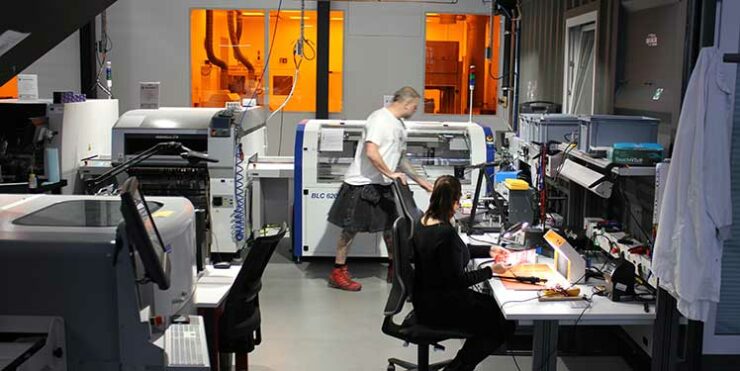
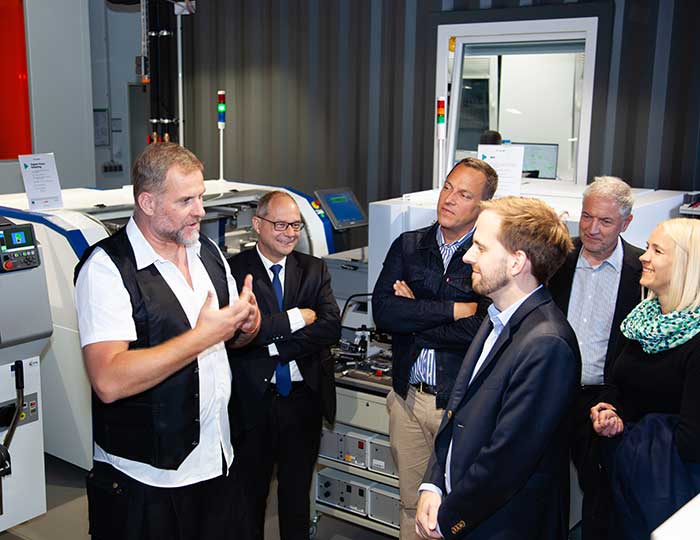
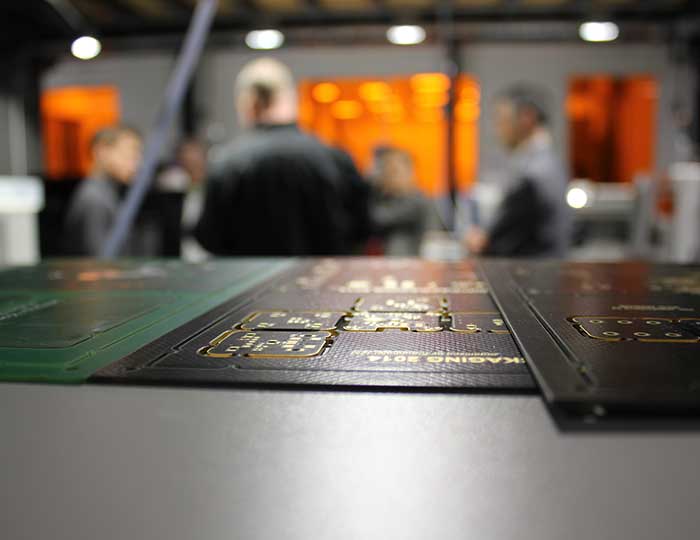
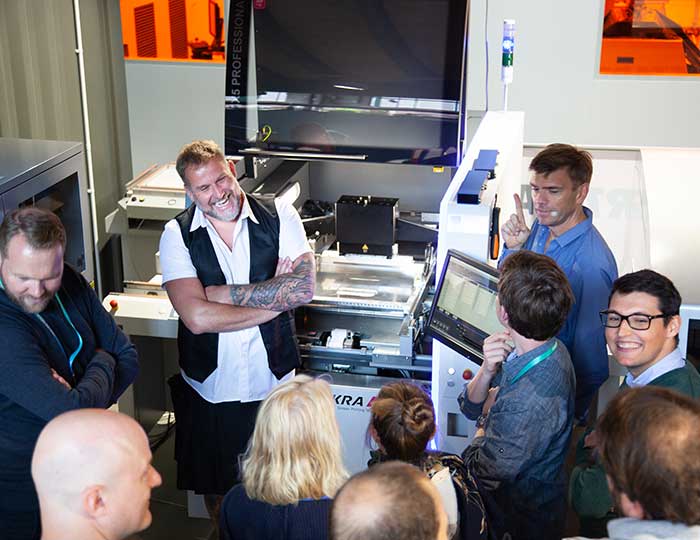
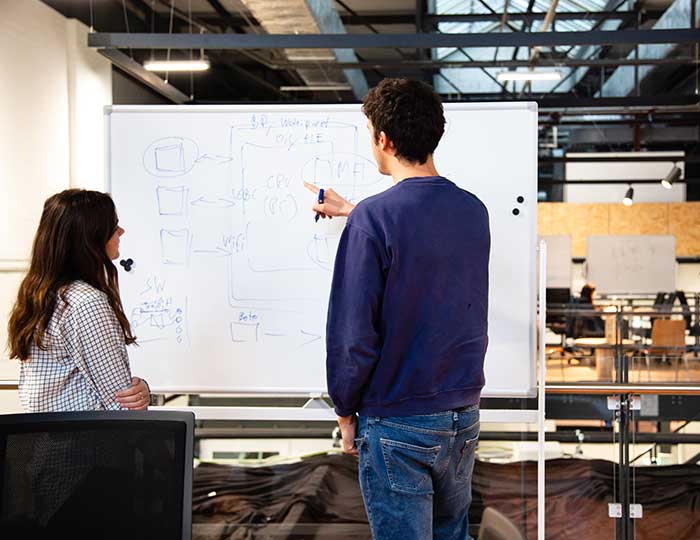
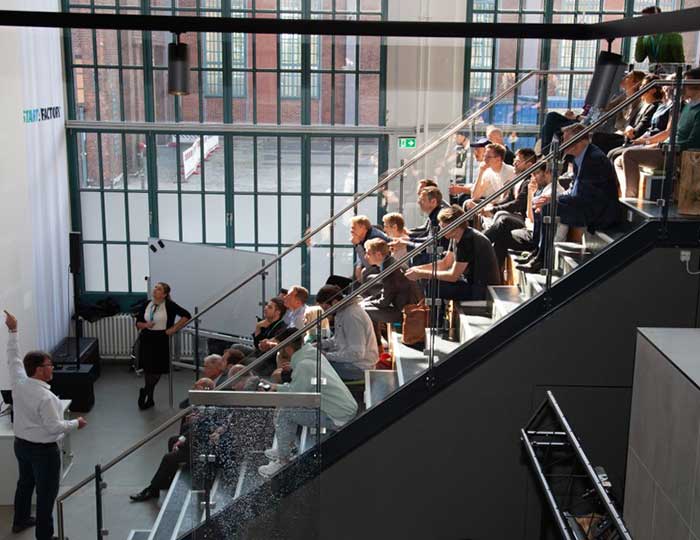
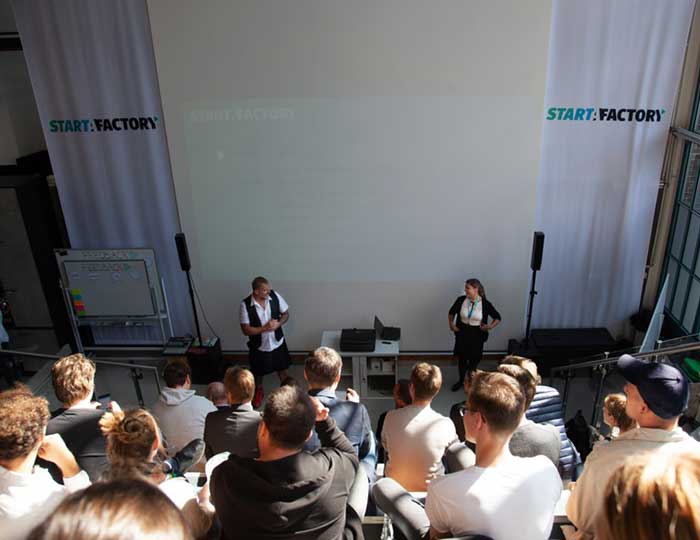
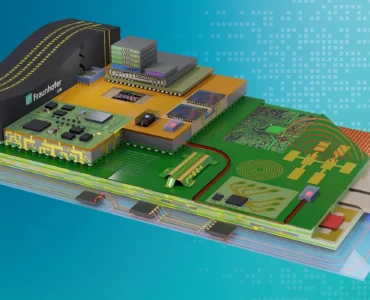
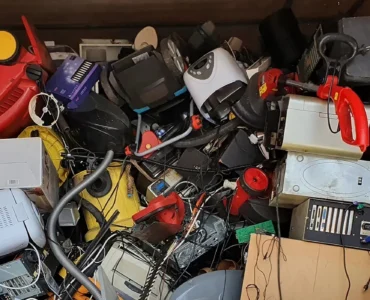
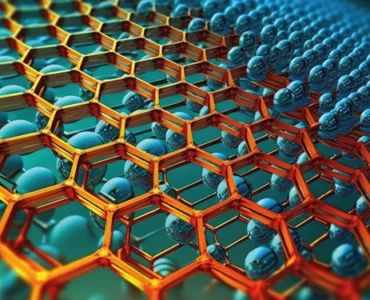
Add comment